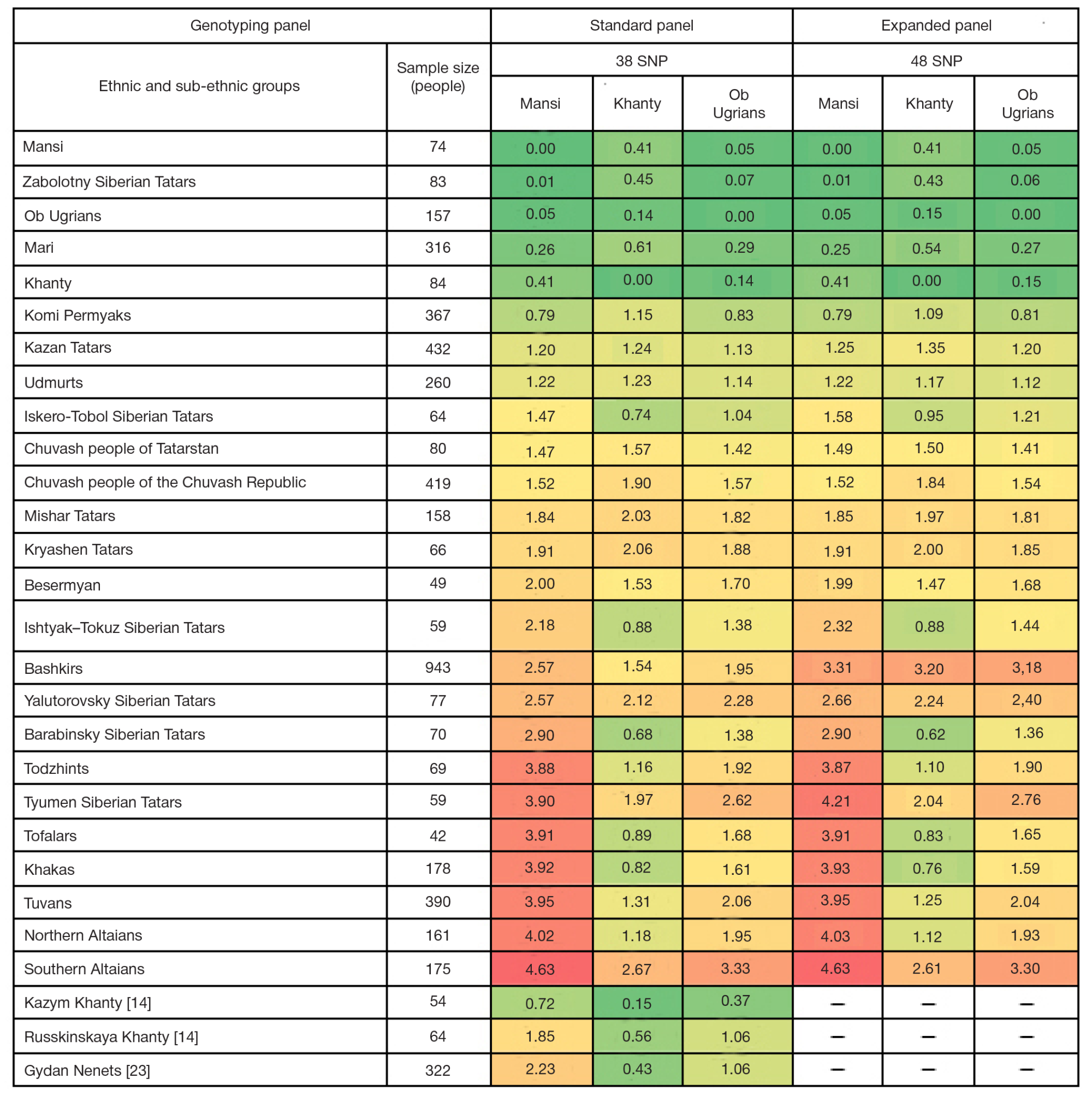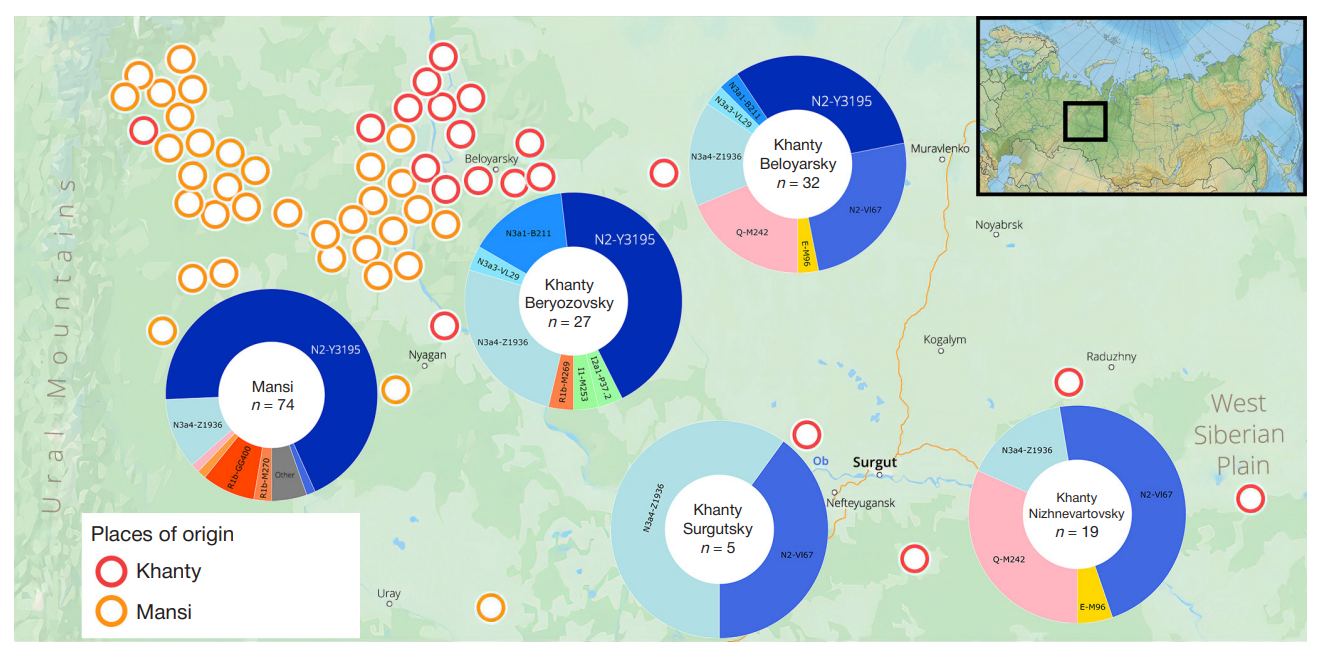
Fig. 1. Gene pool composition and the sites, where the samples of Mansi and various groups of Khanty were originate. Northern Mansi were surveyed in the Beryozovsky district of KhMAO and around, along the Sosva and Lyapin rivers (ancestors in the direct male line were born in villages of Beryozovo, Sosva, Vanzetur, Karym, Kimkyasui, Lombovozh, Verkhniye, Novinskaya, Nyaksimvol, Saranpaul, Khulimsunt, Patrasui, Rakhtynia, Sartynia, Khanglytur, Shhekurya, Yasunt, Unyugan, as well as the sites of Mansi settlements). Khanty were surveyed in the Beloyarsky (n = 32), Beryozovsky (n = 27), Surgutsky (n = 5), and Nizhnevartovsky (n = 19) districts of KhMAO
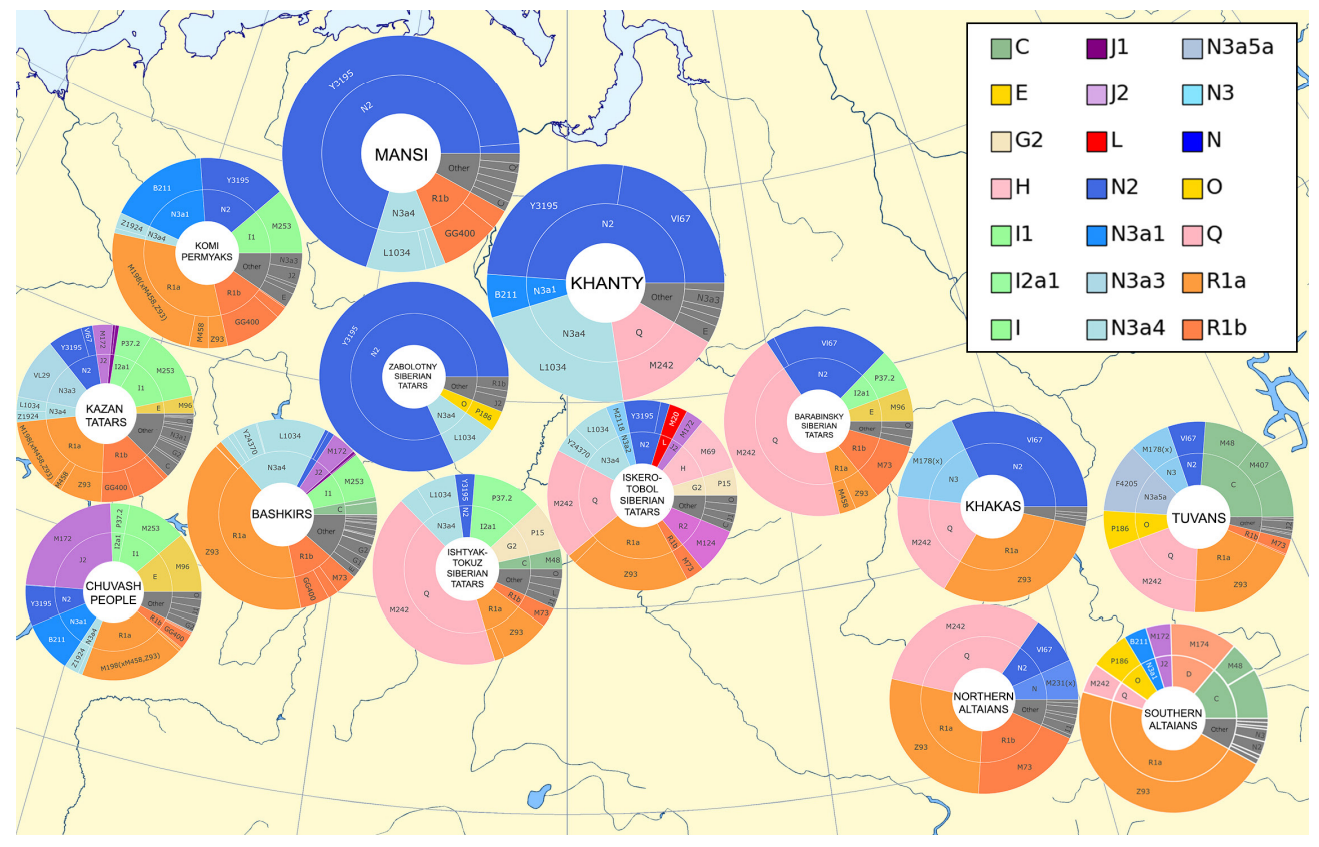
Fig. 2. Genetic portraits of the Ob Ugrians and surrounding indigenous peoples of the Ural region and Western Siberia. The haplogroup name is provided in the inner ring, while the outer ring provides markers determining the haplogroup; the outer ring division into sectors shows the sub-haplogroup frequency in the population. The color of each Y chromosome haplogroup is specified in the map key.
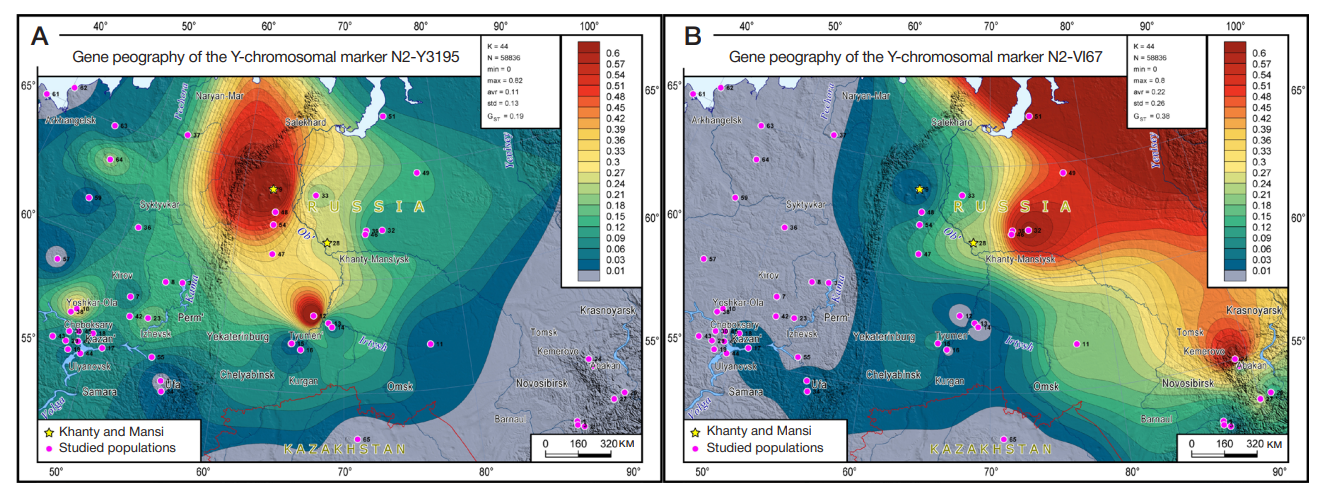
Fig. 3. Gene geography of the Y chromosome haplogroup N2 major branches: western branch Y3195 of the haplogroup N2 (А) and eastern branch VL67 of the haplogroup N2 (B)
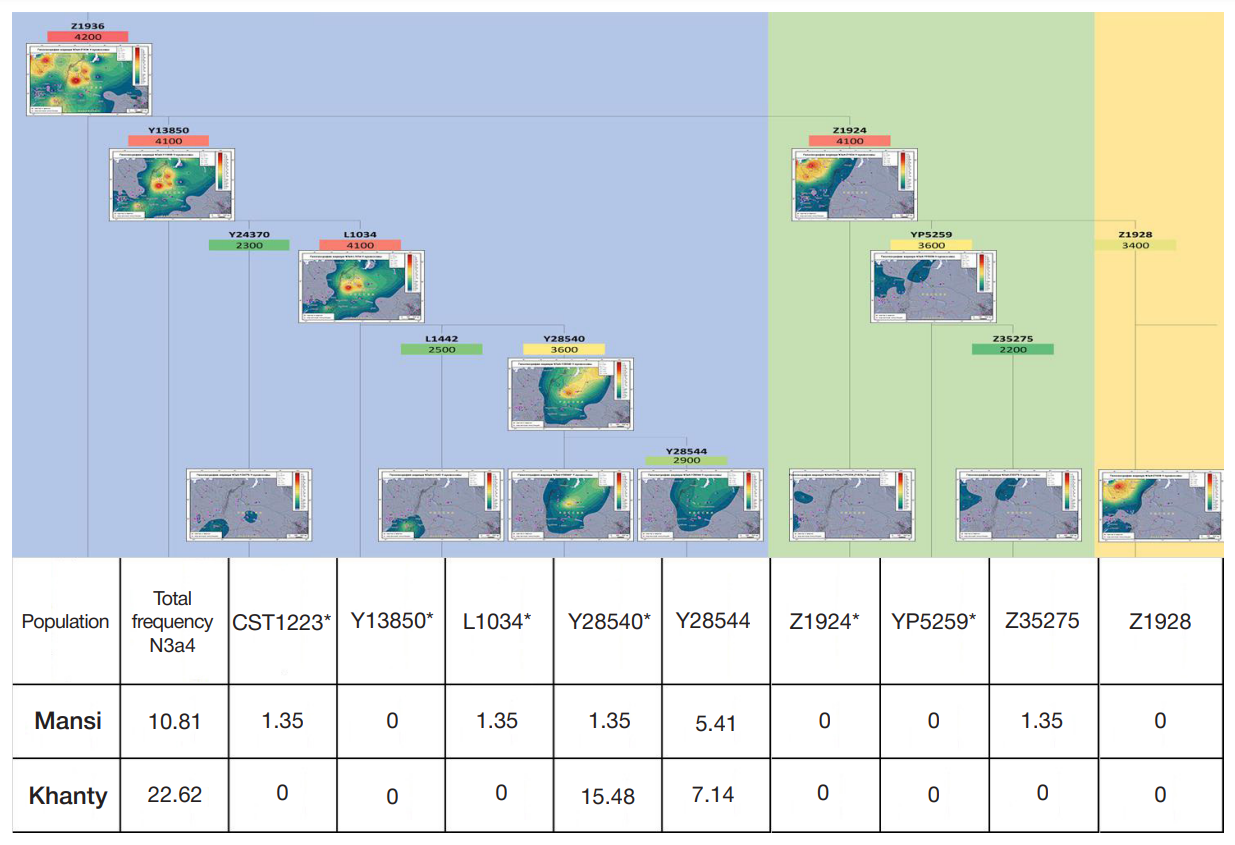
Fig. 4. Phylogenetic structure of the Ural-Siberian cluster N3a4 and frequency of distinct lineages in the populations of Khanty and Mansi. The numbers provided under the names of the branches represent their age in thousands of years ago (kya); the 95% confidence intervals are provided in the text
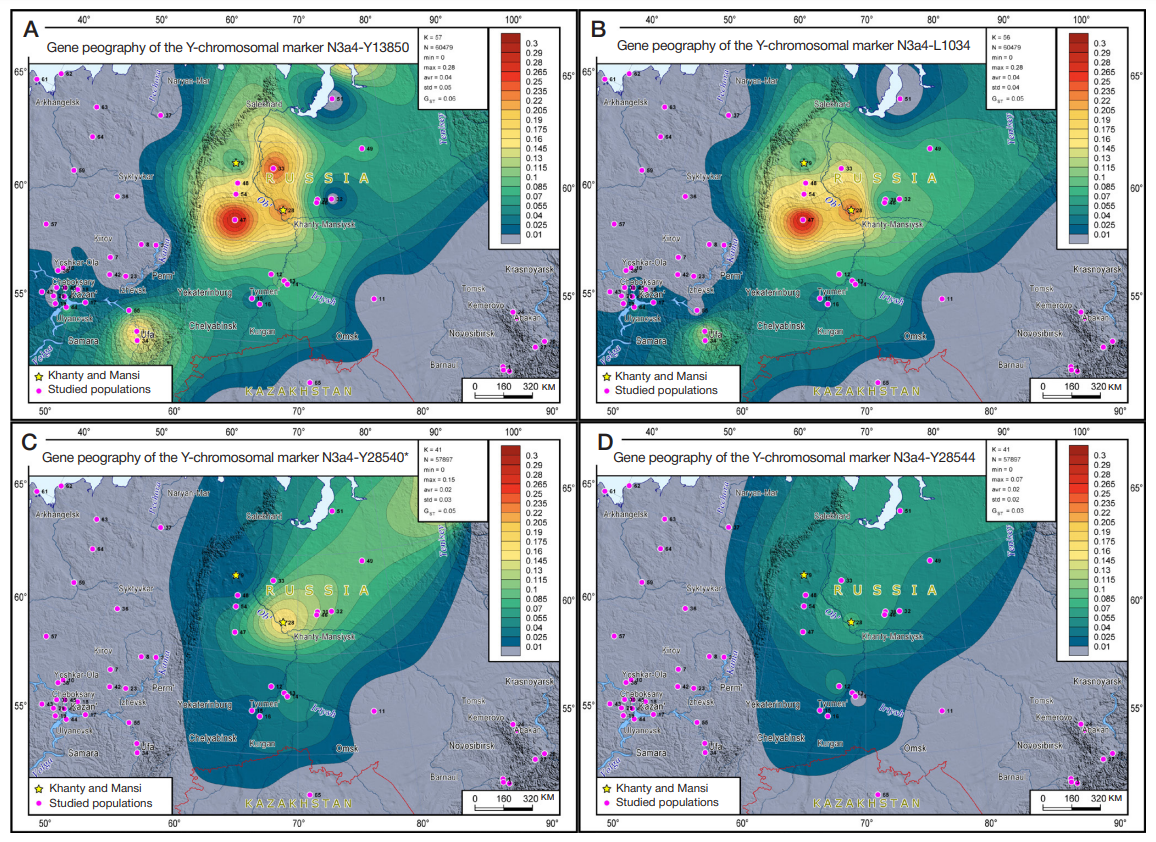
Fig. 5. Geographical distribution and frequency of the haplogroup N3a4 sub-branches. А. Gene geography of the haplogroup N3a4 branch Y13850. B. Gene geography of the haplogroup N3a4 branch L1034. C. Gene geography of the haplogroup N3a4 branch Y28540*. D. Gene geography of the haplogroup N3a4 branch Y28544
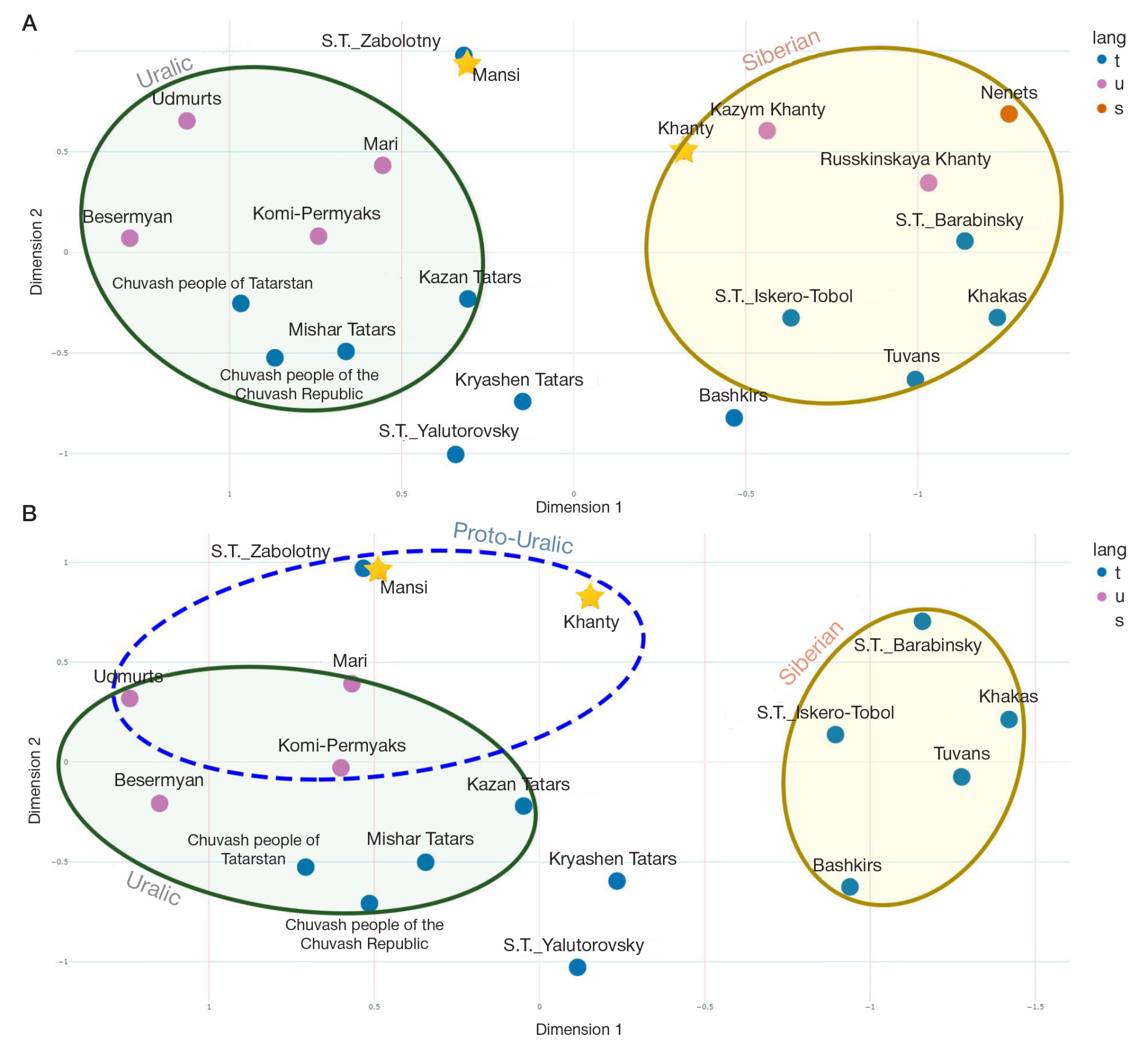
Fig. 6. Position of the Ob Ugrians in the genetic space of surrounding peoples of Russia. А. Multidimensional scaling plot based on the standard panel of 38 Y-chromosomal markers (stress coefficient = 0.14; alienation coefficient = 0.16). B. Multidimensional scaling plot based on the extended panel of 48 Y-chromosomal markers (stress coefficient = 0.16; alienation coefficient = 0.17). The peoples speaking languages of the Uralic linguistic family are highlighted in pink; those belonging to the Turkic branch of the Altaic language family are highlighted in blue
Table 1. Frequencies (%) of Y chromosome haplogroups in the gene pools of Khanty and Mansi

Note: the gradient from minimum to maximum frequencies is highlighted in shades of red and pink: the more intense the cell color, the higher the frequency
Table 2. Pattern of genetic distances between the Ob Ugrians and surrounding peoples of Russia
